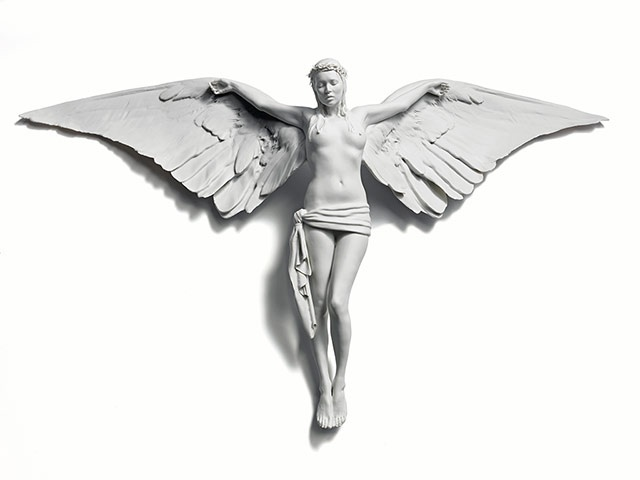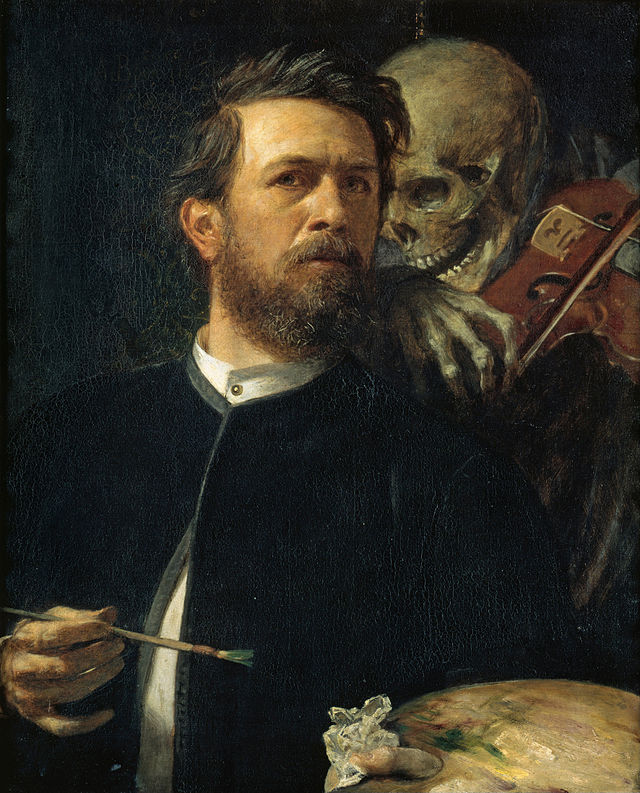 Homage to Damien Hirst – The Butterfly Man, Venice, by Sir Peter Blake
Homage to Damien Hirst – The Butterfly Man, Venice, by Sir Peter Blake
Auguries of Innocence
To see a world in a grain of sand
And a heaven in a wild flower,
Hold infinity in the palm of your hand,
And eternity in an hour.
A robin redbreast in a cage
Puts all heaven in a rage.
A dove-house fill’d with doves and pigeons
Shudders hell thro’ all its regions.
A dog starv’d at his master’s gate
Predicts the ruin of the state.
A horse misused upon the road
Calls to heaven for human blood.
Each outcry of the hunted hare
A fibre from the brain does tear.
A skylark wounded in the wing,
A cherubim does cease to sing.
The game-cock clipt and arm’d for fight
Does the rising sun affright.
Every wolf’s and lion’s howl
Raises from hell a human soul.
The wild deer, wand’ring here and there,
Keeps the human soul from care.
The lamb misus’d breeds public strife,
And yet forgives the butcher’s knife.
The bat that flits at close of eve
Has left the brain that won’t believe.
The owl that calls upon the night
Speaks the unbeliever’s fright.
He who shall hurt the little wren
Shall never be belov’d by men.
He who the ox to wrath has mov’d
Shall never be by woman lov’d.
The wanton boy that kills the fly
Shall feel the spider’s enmity.
He who torments the chafer’s sprite
Weaves a bower in endless night.
The caterpillar on the leaf
Repeats to thee thy mother’s grief.
Kill not the moth nor butterfly,
For the last judgement draweth nigh.
He who shall train the horse to war
Shall never pass the polar bar.
The beggar’s dog and widow’s cat,
Feed them and thou wilt grow fat.
The gnat that sings his summer’s song
Poison gets from slander’s tongue.
The poison of the snake and newt
Is the sweat of envy’s foot.
The poison of the honey bee
Is the artist’s jealousy.
The prince’s robes and beggar’s rags
Are toadstools on the miser’s bags.
A truth that’s told with bad intent
Beats all the lies you can invent.
It is right it should be so;
Man was made for joy and woe;
And when this we rightly know,
Thro’ the world we safely go.
Joy and woe are woven fine,
A clothing for the soul divine.
Under every grief and pine
Runs a joy with silken twine.
The babe is more than swaddling bands;
Throughout all these human lands;
Tools were made and born were hands,
Every farmer understands.
Every tear from every eye
Becomes a babe in eternity;
This is caught by females bright,
And return’d to its own delight.
The bleat, the bark, bellow, and roar,
Are waves that beat on heaven’s shore.
The babe that weeps the rod beneath
Writes revenge in realms of death.
The beggar’s rags, fluttering in air,
Does to rags the heavens tear.
The soldier, arm’d with sword and gun,
Palsied strikes the summer’s sun.
The poor man’s farthing is worth more
Than all the gold on Afric’s shore.
One mite wrung from the lab’rer’s hands
Shall buy and sell the miser’s lands;
Or, if protected from on high,
Does that whole nation sell and buy.
He who mocks the infant’s faith
Shall be mock’d in age and death.
He who shall teach the child to doubt
The rotting grave shall ne’er get out.
He who respects the infant’s faith
Triumphs over hell and death.
The child’s toys and the old man’s reasons
Are the fruits of the two seasons.
The questioner, who sits so sly,
Shall never know how to reply.
He who replies to words of doubt
Doth put the light of knowledge out.
The strongest poison ever known
Came from Caesar’s laurel crown.
Nought can deform the human race
Like to the armour’s iron brace.
When gold and gems adorn the plow,
To peaceful arts shall envy bow.
A riddle, or the cricket’s cry,
Is to doubt a fit reply.
The emmet’s inch and eagle’s mile
Make lame philosophy to smile.
He who doubts from what he sees
Will ne’er believe, do what you please.
If the sun and moon should doubt,
They’d immediately go out.
To be in a passion you good may do,
But no good if a passion is in you.
The whore and gambler, by the state
Licensed, build that nation’s fate.
The harlot’s cry from street to street
Shall weave old England’s winding-sheet.
The winner’s shout, the loser’s curse,
Dance before dead England’s hearse.
Every night and every morn
Some to misery are born,
Every morn and every night
Some are born to sweet delight.
Some are born to sweet delight,
Some are born to endless night.
We are led to believe a lie
When we see not thro’ the eye,
Which was born in a night to perish in a night,
When the soul slept in beams of light.
God appears, and God is light,
To those poor souls who dwell in night;
But does a human form display
To those who dwell in realms of day.
William Blake
An augury is a sign or omen. Auguries of Innocence is a poem from one of William Blake’s notebooks now known as The Pickering Manuscript. It is assumed to have been written in 1803, but was not published until 1863 in the companion volume to Alexander Gilchrist‘s biography of William Blake. The poem contains a series of paradoxes which speak of innocence juxtaposed with evil and corruption. The poem is 132 lines and has been published with and without breaks that divide the poem into stanzas.
 Model by Allen Jones, 2013. With a whiff of art nouveau, it pays homage to her love of a vintage frock
Model by Allen Jones, 2013. With a whiff of art nouveau, it pays homage to her love of a vintage frock Body Armour , Allen Jones, 2013
Body Armour , Allen Jones, 2013 Porcelain Kate on white background, Nick Knight, 2013.
Porcelain Kate on white background, Nick Knight, 2013. Kate Jacquard Tapestry by Chuck Close, 2007.
Kate Jacquard Tapestry by Chuck Close, 2007. A gold statue of supermodel Kate Moss entitled Siren by British artist Marc Quinn, circa 2008
A gold statue of supermodel Kate Moss entitled Siren by British artist Marc Quinn, circa 2008 Sphinx (Road to Enlightenment), Marc Quinn, 2007
Sphinx (Road to Enlightenment), Marc Quinn, 2007 Naked Portrait, Lucian Freud, 2002
Naked Portrait, Lucian Freud, 2002
































































